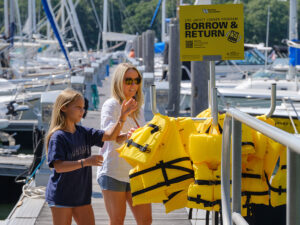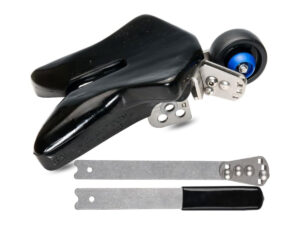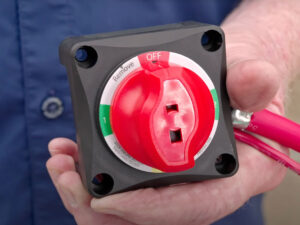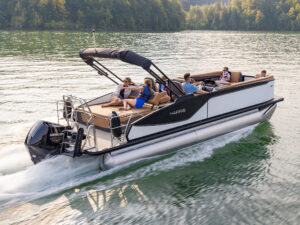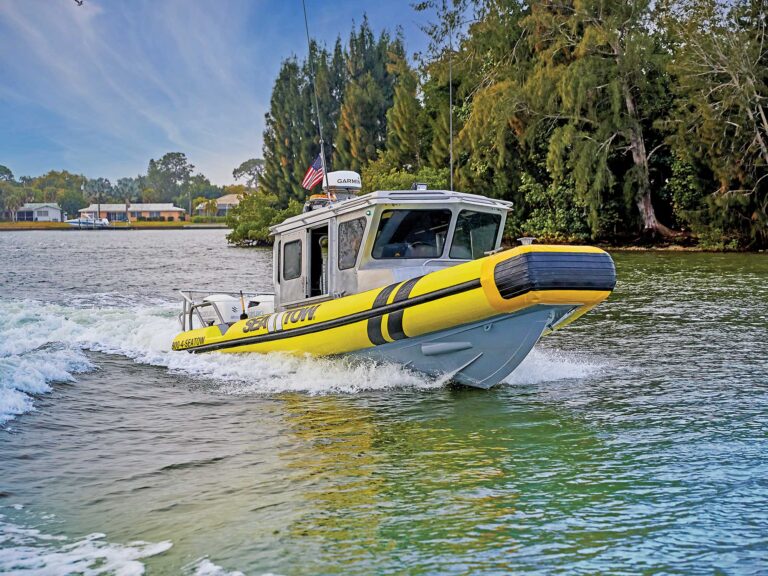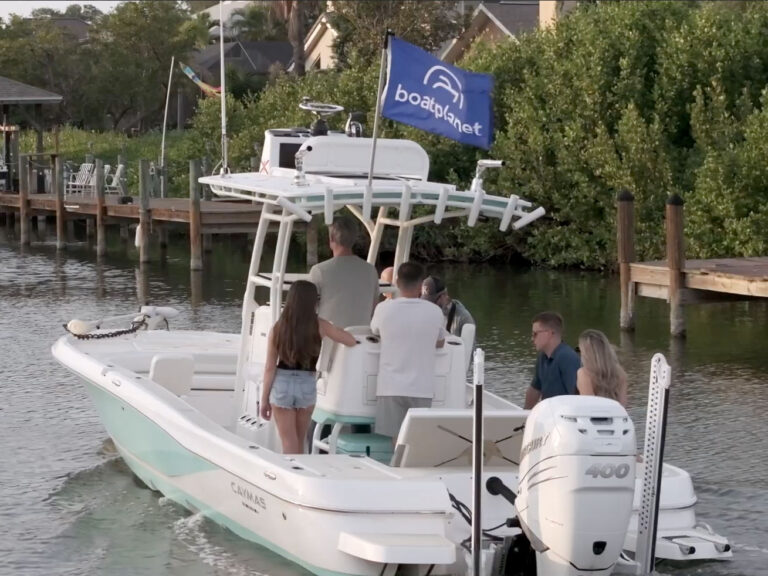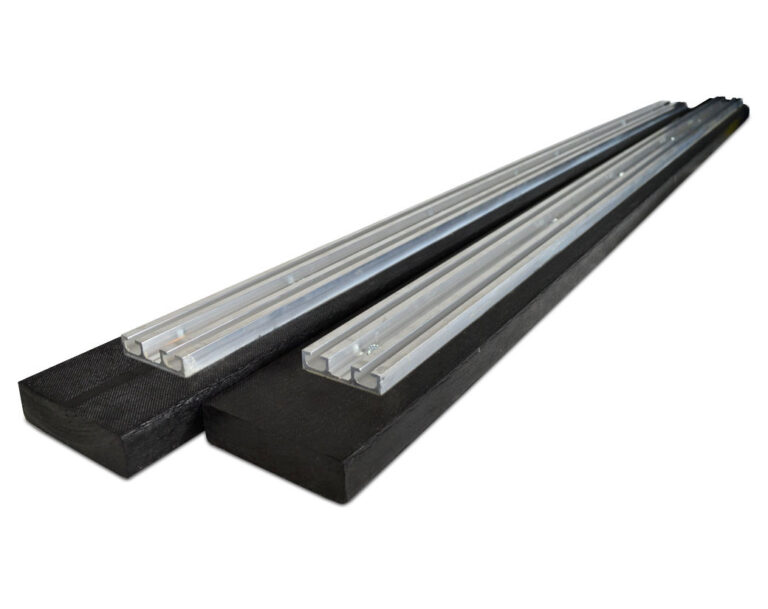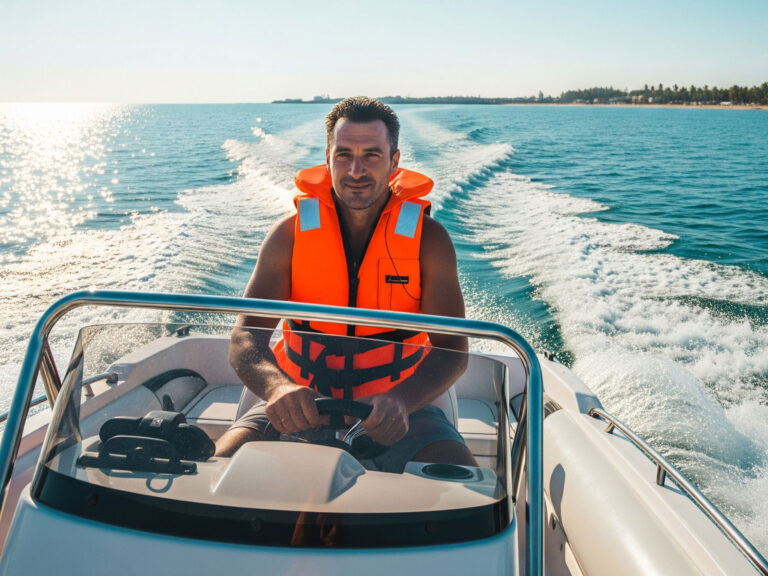
The seas seemed calm and the forecast looked fine as Capt. Kelly Gordon prepared to take her customer’s private yacht from the Bahamas back to their home in Florida. She had looked at the forecast and made the decision to cross, which is pretty routine in fair conditions. But as she exited the Northwest Providence Channel and started to traverse the notoriously shallow Great Bahama Bank, a serious storm appeared out of nowhere, kicking up confused seas and buffeting the boat with heavy wind and rain. Suddenly, Gordon was faced with a serious situation: running through the narrow channels with little margin for error. She had a decision to make fast, and how she handled it would determine the safety of her passengers and crew. If caught in the same situation, what would you do?
Weather is the one thing beyond any boater’s control. What is in the captain’s control is how to plan for and handle inclement weather when it arrives. Fortunately, Gordon had a plan, relying on her training as a 500 GT Master and 15 years of experience at the helm. “Weather and navigation are my favorite parts of my job,” she says.
We talked to Gordon about boating and weather, and here’s her sage advice.

Check and Recheck
“Checking the weather before a trip should be your highest priority,” Gordon says. “You can have your vessel in tiptop shape and bring aboard all the supplies and spare parts. You can study the best route to your destination and have it all planned out. But if the weather isn’t suitable, the rest is irrelevant.”
When preparing for long cruises, Gordon starts seriously monitoring the weather a week out to look for any systems that might be moving through or developing. She’ll also look at the typical tendencies for the weather at the time of year in the area where she plans to cruise. She will build in departure flexibility based on weather, sometimes delaying the trip for as long as 10 days if needed.
Three days before departure, Gordon focuses on weather forecasts from several sources with near-obsessive regularity. She uses several services available to any boater, such as the National Weather Service Marine Forecast provided by the National Oceanic and Atmospheric Administration’s National Data Buoy Center. She also uses the Windy app, Buoyweather, and other apps and websites such as Windfinder, PocketGrib and Storm Radar. At times, she will even pay for professional weather-routing services such as WRI Weather Routing.
“The day prior to departure, I will confirm that I am, in fact, departing,” she says. “The morning of, I will do one more weather check to see if conditions have changed overnight. It may seem obsessive to check every weather update, but I feel that you can never be too sure of the safety of yourself and crew.”

Getting Caught
Even with the best technology, everyone who’s been boating long enough has gotten caught by unexpected weather. Whether it’s on the local lake or 100 miles from the nearest inlet, it happens. How do you handle it? A lot depends on the conditions, but there are some general things you can do, a few of which might go against your initial instincts.
It’s important and useful to have procedures in place and a general checklist for getting underway, and it will allow you to be ahead of the game if a situation arises. “Planning for the unexpected will go a long way in boating and could be life-saving in some instances,” Gordon says. Here are some of the ways she handled that nasty situation in the Bahamas.
Ease the Throttles
When caught in nasty weather, your instinct might be to hammer the throttles and get out of it. But that’s not always the best way to handle it.
“The first thing you should do is slow down,” Gordon advises.
If you find yourself in the middle of a microburst, for example, the seas will kick up and restrict your visibility. Driving at a slower speed will be more comfortable for your crew, and give you more time to react and make decisions based on the continuously changing conditions.
Trying to run away from the storm can have bad results, particularly if you focus on fleeing ahead of it and not safely navigating through it.
“Just don’t do it,” Gordon says. “Wait. Look at the direction of the storm, and go in the opposite direction or wait for it to pass.”

Keep Watch
The Great Bahamas Bank, where Gordon and her crew got caught, is notoriously shallow and has numerous coral heads, so there is little room for error. Because she is in charge of a charter crew, Gordon already had one crewmember on watch at the bridge. But to help assess the situation, she felt she needed more help.
“I immediately added a third watch stander to the bridge, turned my navigation lights on, and slowed way down,” she explains. “I proceeded to determine just how far I was from the Banks and how much time before I entered the shallows, and looked to see how much error I would have.”
Her concern about being blown into shallower waters and possibly meeting other vessels in a restricted area led her to bring extra eyes to help. If you’re a recreational boater, you likely don’t have a bridge or a professional crew, but you can enlist friends and family to keep an eye out for nav aids, other boats and possible hazards as you make way.

Assess the Threat
At that moment, Gordon had to make a decision. Should she keep going forward in limited visibility into a busy area with limited deep water, or should she alter her plans?
“I elected to turn around and head back toward Nassau,” she says. “What this did was give the storm time to pass, put me back in deeper waters, and had me headed back to port in the event that I needed to.”
Gordon adds that while the vessel and crew could have handled it, “there are no awards for who has been through the biggest storms or who is the bravest crew. There are, however, potentially catastrophic consequences for proceeding when you can just turn around and wait for the storm to pass.”
If you alter course, make sure it’s not in a direction that exacerbates the situation, such as a dangerous following or beam sea that could at best make your passengers really uncomfortable. Make sure you have enough fuel to change direction, and alter your cruising speeds to increase your range if necessary.
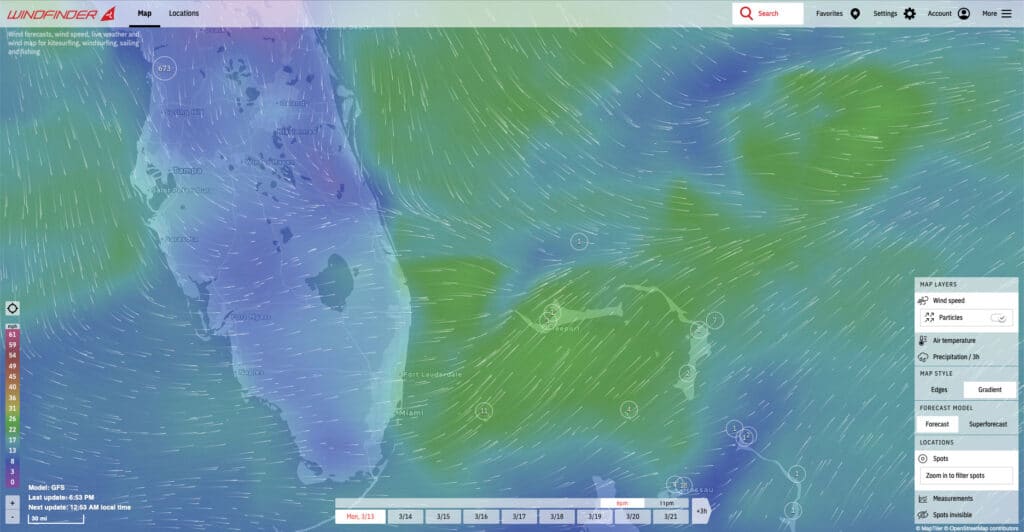
The Waiting Game
Sometimes when conditions rapidly deteriorate, our first instinct is to run for the inlet and the safety of the inner harbor. Sometimes, though, it can be safer to endure the rough conditions and wait for a more favorable opportunity. After all, a lot of inlets are tricky to navigate even in fair seas.
“Why risk it?” Gordon asks. “Most storms will pass in a matter of minutes, and then you will regain maximum visibility.”
Certain inlets are difficult to transit through because of an incoming or outgoing tide. Or they have heavy commercial traffic, so it might be best to wait for a clear path. Even if you’re a great captain, all these instances have what-if factors. What if my vessel loses power; what if the other vessel loses power; what if there isn’t much water outside the channel and I need to hug the edge? These are the questions Gordon asks herself before taking on a tough inlet.
Read Next: Watching Weather While Boating
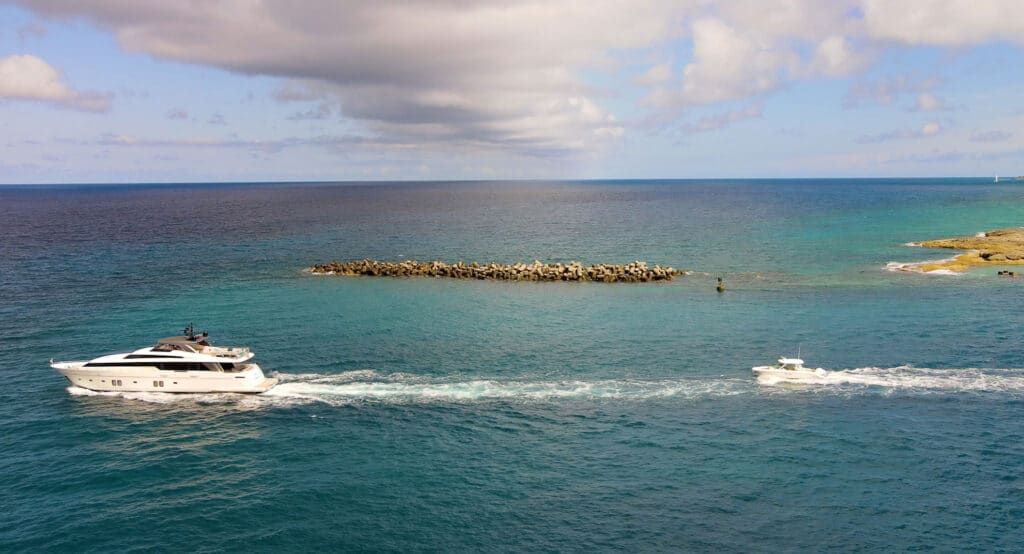
Batten Down
It’s a cliché expression heard in every pirate movie ever made, but the command to batten down the hatches while on the water still rings true. When caught in a storm, Gordon’s crew prepare the vessel by making sure all portholes and doors are secure. Then they place loose items belowdecks on the floor to keep them from falling and breaking. Cabinets are secured. They clear the deck, and secure and cover any furniture. They check the engine room hourly to make sure it’s free of any possible interferences. They instruct guests not to walk the decks, especially toward the bow of the vessel where they can enter a blind spot should they fall overboard.
Get Home Safe
Fortunately for all, Gordon’s preparation and experience helped her make the correct call that day for her passengers and crew. She stayed safe in deeper waters until the storm passed and was able to make the crossing to Florida after a few hours delay. Had she blindly gone forward, she might have made it without incident but could have made the situation much worse. Wherever you boat, you should take the same steps to make sure everyone stays safe.
No matter what, follow Gordon’s best boating advice when dealing with weather: If you’re in port and the weather looks bad, just don’t go.

